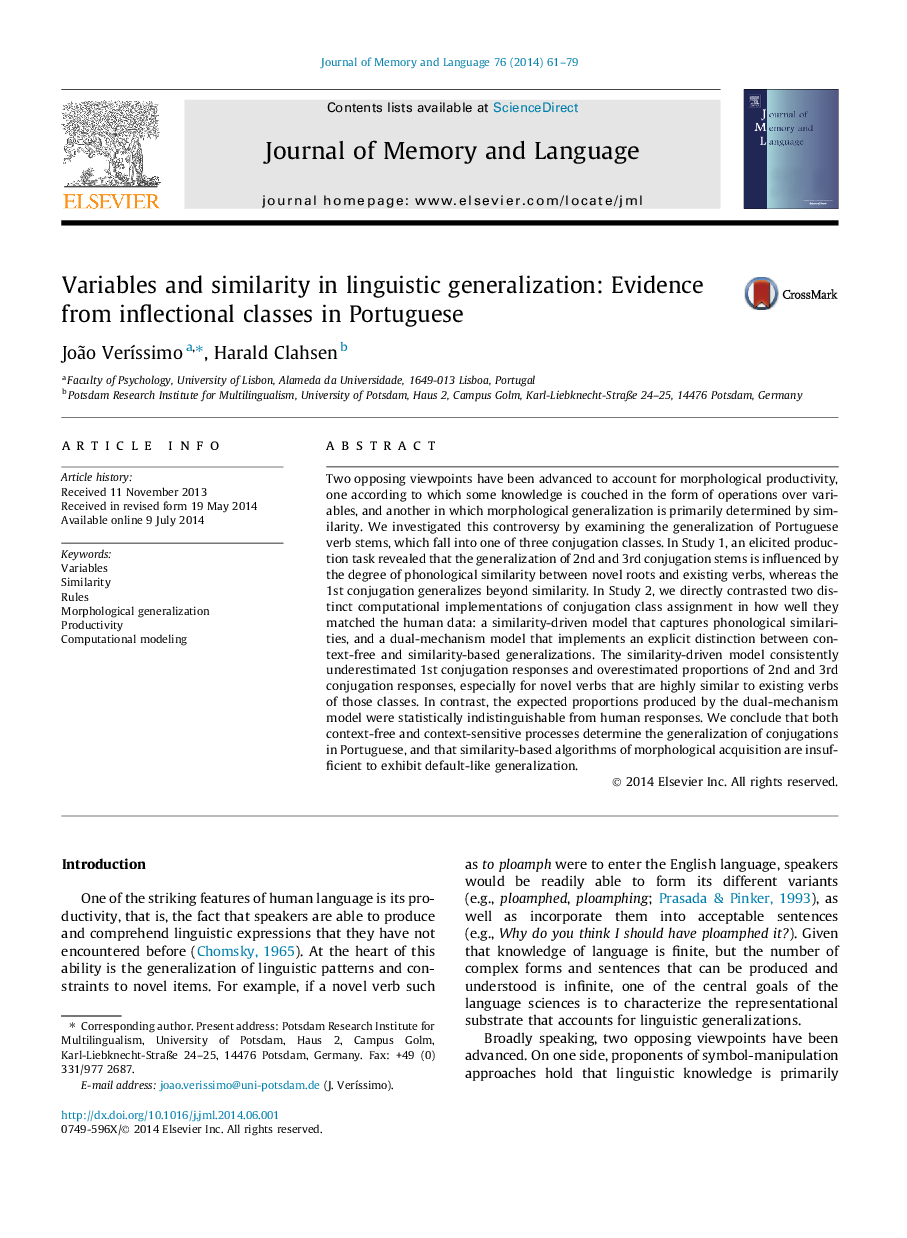| کد مقاله | کد نشریه | سال انتشار | مقاله انگلیسی | نسخه تمام متن |
|---|---|---|---|---|
| 931814 | 1474642 | 2014 | 19 صفحه PDF | دانلود رایگان |
• We report a particularly striking case of purely morphological generalizations.
• Speakers of Portuguese showed a clear contrast between two types of generalization.
• We compare two computational models to the data, similarity-driven and dual-mechanism.
• The similarity-driven model underestimated context-free, unbounded generalizations.
• The predictions of the dual-mechanism model were remarkably close to the human data.
Two opposing viewpoints have been advanced to account for morphological productivity, one according to which some knowledge is couched in the form of operations over variables, and another in which morphological generalization is primarily determined by similarity. We investigated this controversy by examining the generalization of Portuguese verb stems, which fall into one of three conjugation classes. In Study 1, an elicited production task revealed that the generalization of 2nd and 3rd conjugation stems is influenced by the degree of phonological similarity between novel roots and existing verbs, whereas the 1st conjugation generalizes beyond similarity. In Study 2, we directly contrasted two distinct computational implementations of conjugation class assignment in how well they matched the human data: a similarity-driven model that captures phonological similarities, and a dual-mechanism model that implements an explicit distinction between context-free and similarity-based generalizations. The similarity-driven model consistently underestimated 1st conjugation responses and overestimated proportions of 2nd and 3rd conjugation responses, especially for novel verbs that are highly similar to existing verbs of those classes. In contrast, the expected proportions produced by the dual-mechanism model were statistically indistinguishable from human responses. We conclude that both context-free and context-sensitive processes determine the generalization of conjugations in Portuguese, and that similarity-based algorithms of morphological acquisition are insufficient to exhibit default-like generalization.
Journal: Journal of Memory and Language - Volume 76, October 2014, Pages 61–79
